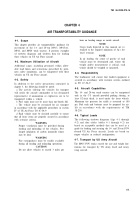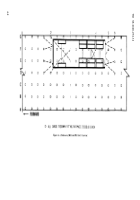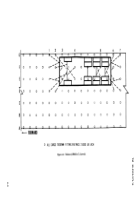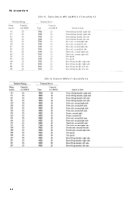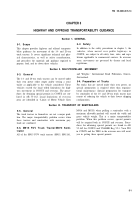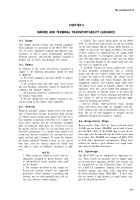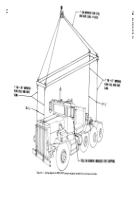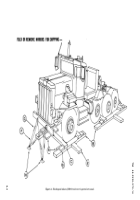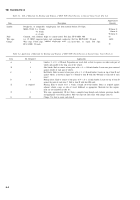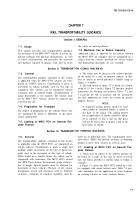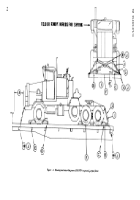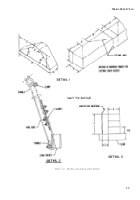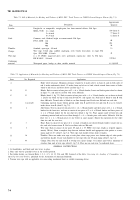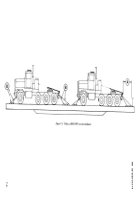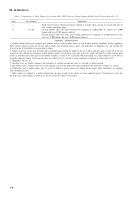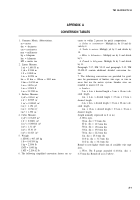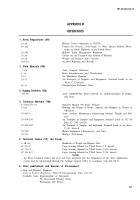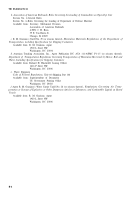TM-55-2320-273-14 - Page 27 of 40
TM 55-2320-273-14
CHAPTER 7
RAIL TRANSPORTABILITY GUIDANCE
Section
I. GENERAL
7-1. Scope
This chapter provides rail transportability guidance
for movement of the M915 FOV vehicles. It covers sig-
nificant technical and physical characteristics, as well
as safety considerations, and prescribes the materials
and guidance required to prepare, load, and tie down
Section Il. TRANSPORT
7-3. General
The transportability guidance contained in this section
is applicable when the M915 FOV vehicles are trans-
ported on CONUS railways. Consideration is given to
movement on railcars normally used for this type of
equipment. The vehicles can be transported without
restriction only at reduced height. Sectionalization or
major disassembly is not required. The exhaust stack
on the M915 FOV vehicles should be removed and
stowed in the cab.
7-4. Preparation for Transport
The degree of preparation for the vehicles before they
are transported by railcar is dependent on the opera-
tional commitment.
7-5. Loading of M915 FOV on General Pur-
pose Flatcars
Section Ill. TRANSPORT
7-6. General
The transportability guidance contained in this section
is applicable when the M915 FOVs are transported on
foreign railways. Consideration is given to single and
multiple vehicle movements for the type of flatcar nor-
mally used in the movement of this type of vehicle.
When loaded on a suitable flatcar, the vehicle can be
transported with restrictions. The M915 FOVs exceed
the (PPI) Passe-Partout International guage railways,
due to height. Special permits must be obtained for
movement of these vehicles. Because of the various
designation system and clearances used by different
countries, evaluation of transport capability must be
the trucks on open-top flatcars.
7-2. Maximum Use of Railcar Capacity
Additional cargo, as approved by the activity offering
the M915 FOV for transport, may be transported on a
railcar with the vehicles provided the railcar weight
and dimensional limitations are not exceeded.
ON CONUS RAILWAYS
a.
The trucks may be placed in the tiedown position
on the railcar by a crane of adequate capacity, or they
may be driven or towed provided a suitable ramp or
bridge is available.
b.
The load shown in figure 7-1 is based on a flatcar
width of 10 feet 6 inches. Figure 7-2 provides detailed
instructions for blocking and tiedown. Tables 7-1 and
7-2 provide the bill of materials and the instructions
for their application to secure the system on general
purpose flatcars.
NOTE
A staggered nailing pattern should be used
when lumber or laminated lumber is nailed to
the floor of the railcar. The nailing pattern
for an upper piece of lumber should be adjust-
ed as required, so that a nail for that piece
will not be driven into or against a nail in the
lower piece of lumber.
ON FOREIGN RAILWAYS
made on an individual basis. The transportation move-
ment office (TMO) will provide assistance in obtaining
permits to move these vehicles in overseas areas.
7-7. Loading of M915 FOV on Special Pur-
pose Flatcars
a. Trucks may be placed in the tiedown position on
the flatcar by a crane, or they may be driven or towed
onto the flatcar provided a suitable ramp or bridge is
available.
b. Figure 7-3 shows the M915 FOV loaded on a flat-
car equipped with center tiedown rails. Table 7-3 pro-
vides instruction for the application of chain tiedowns
for securing vehicles on center tiedown flatcars.
7-1
Back to Top

